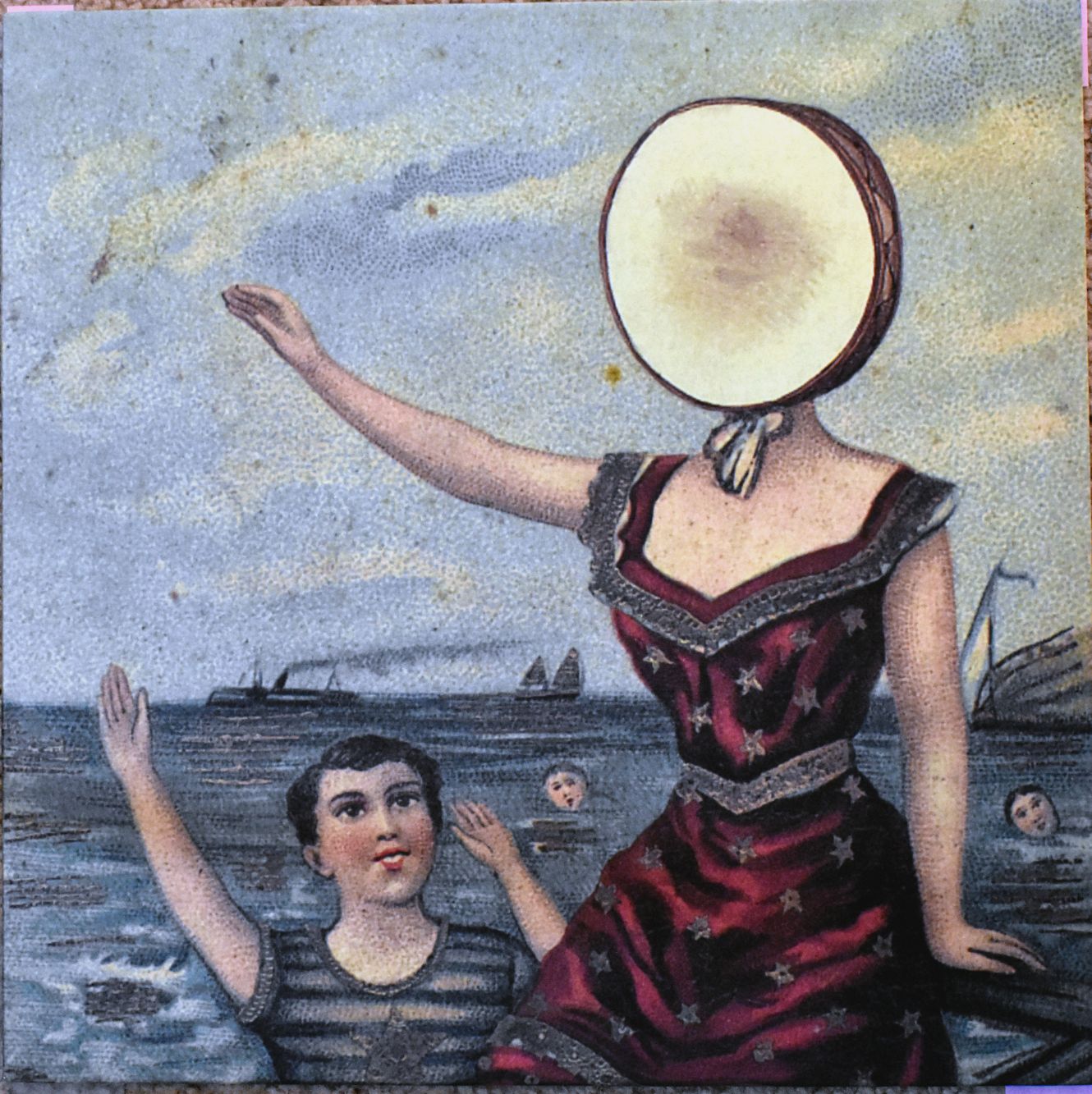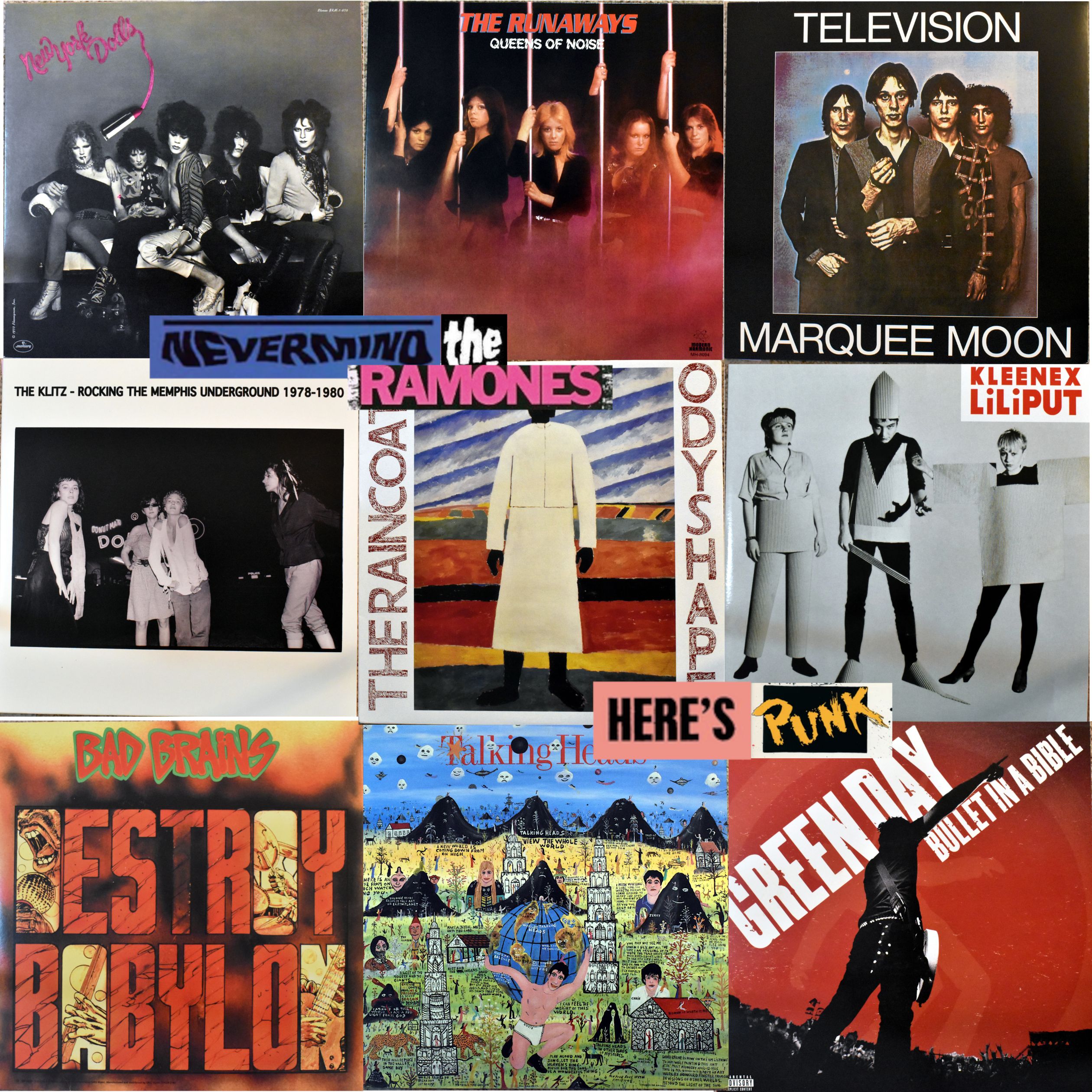RECORD COLLECTION
Thalia Taylor



I spent a day photographing all the vinyl that my partner and I have accumulated. I took almost 200 photos, and didn’t even get to the classical records. Initially, my plan was to just document how music exists in our lives as objects. I wanted to explore the physicality of the music we own— from records we absolutely love to purchases that weren’t that great. As I began editing the photos, I realized that our memories and relationships with these albums were what made them special. To an outsider, a slideshow of our record collection wouldn’t mean anything. I began to collage the album covers together to create more concrete statements about the relationship between music, visual art, and culture. How come we love some records more than others? What makes them beautiful?
Imperfection is integral to record collections. Everyone has their white whale—the crazy expensive album with only a handful of pressings that you experienced at a turning point in your life and that has now become some kind of ineffable goal. My dad is a prolific record collector and has a few of these jewels—a first pressing of Big Star’s Radio City, among them—but we don’t. We stream most of our music and own a large number of the albums that changed our lives on CD. Our records are relics of hyper-specific obsessions, lesser-known records by bands we love, our family and friends’ cast-offs, and relatively inexpensive albums we thought might be interesting.
CLOUDLAND

I discovered Pere Ubu in my dad’s record collection. I’d never heard anything like it before and it sent me down a rabbithole of artsy, experimental post-punk. I love Cloudland so much that at some point something sticky got on the record cover, and it ripped when I next pulled it off the shelf.
THE BEATLES

These Beatles records are among the most loved and most damaged records we own—the White Album is no longer white, and Revolver is held together by strips of masking tape. To me, they grow more interesting as time goes on; use has transformed them from a commercial object into a personal one.
VINYL

Apparently 2016 was the heyday of colored vinyl. The colored records are beautiful and especially mesmerizing on a turntable. Colored vinyl like this doesn’t last as long as normal vinyl; perfect for today, when record collecting is more about the object than the music. Who cares if the vinyl won’t last 30 years if you can stream the album too?
THE WHO

The Who records are cheap at used record stores— it’s why we have so many. I love the puns and the way you can trace the evolution of rock aesthetic through the record covers.
GREY

These are records that I think represent the music my partner listens to the most. I like that, for whatever reason, all these album covers look grey when put together. I think the color grey is representative of the sad-indie trope—not as depressed or cool as black, but still edgy.
THE CARS, ET AL

For a while, records and pop art went together like peanut butter and jelly (or chocolate and hazelnuts, or red wine and european cheese, or whatever). I love the covers of these Cars records way more than I like the records themselves. All these records are pieces of art to me—I love looking at them so much that the music sometimes lets me down.
DIPTYCH

An altar to the Virgin Mary as seen through a pop album about motherhood and a indie-rock album about being in your late-twenties. I wonder what Halsey (as the Virgin Mary) would do if Father John Misty’s man-baby were in her image instead of that beautiful child.
LED ZEPPELIN

Led Zeppelin, 1969-73.
NEVERMIND THE RAMONES, HERE’S PUNK

I have lots and lots and lots of thoughts about Punk. There are a lot of rare Punk records. We own none of them.
BRAND NEW

Brand New and unopened. We got this record a couple of days before the sexual assault allegations agains Brand New’s frontman, Jesse Lacey, came out. We never opened it, but also never got rid of it. Even if you can separate the artist from the art, can you separate the memory from the object?